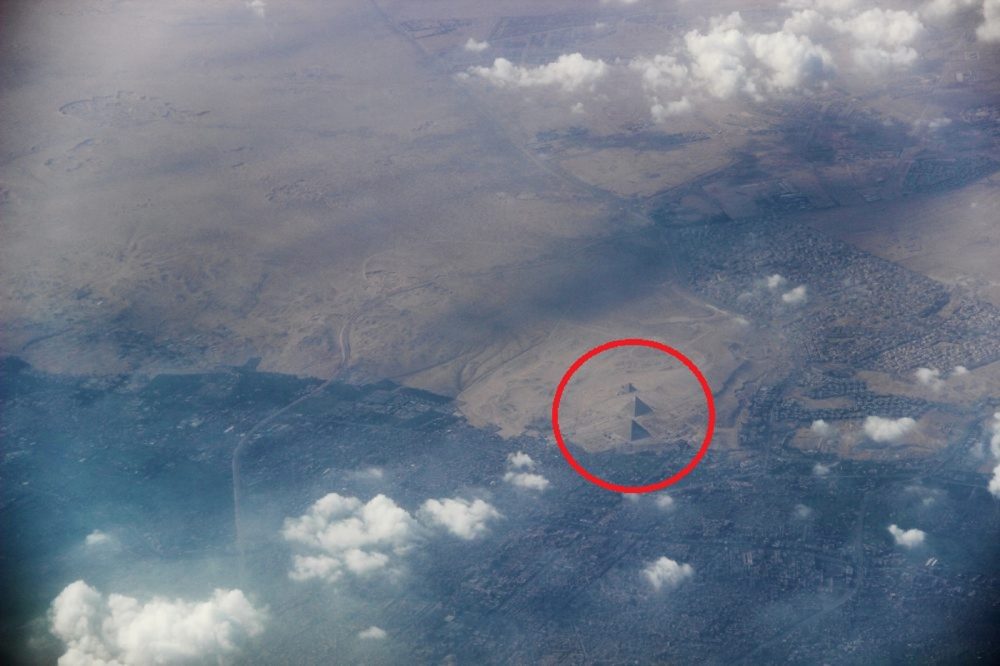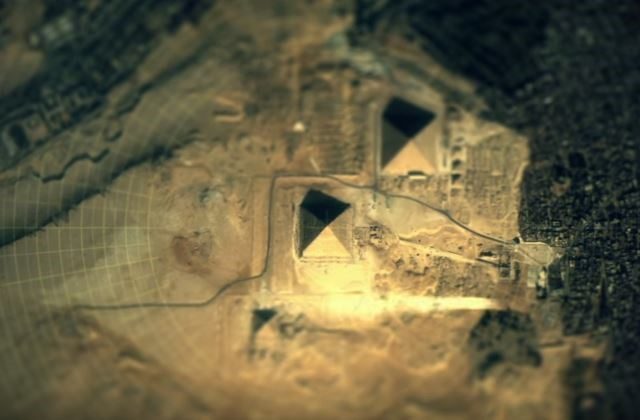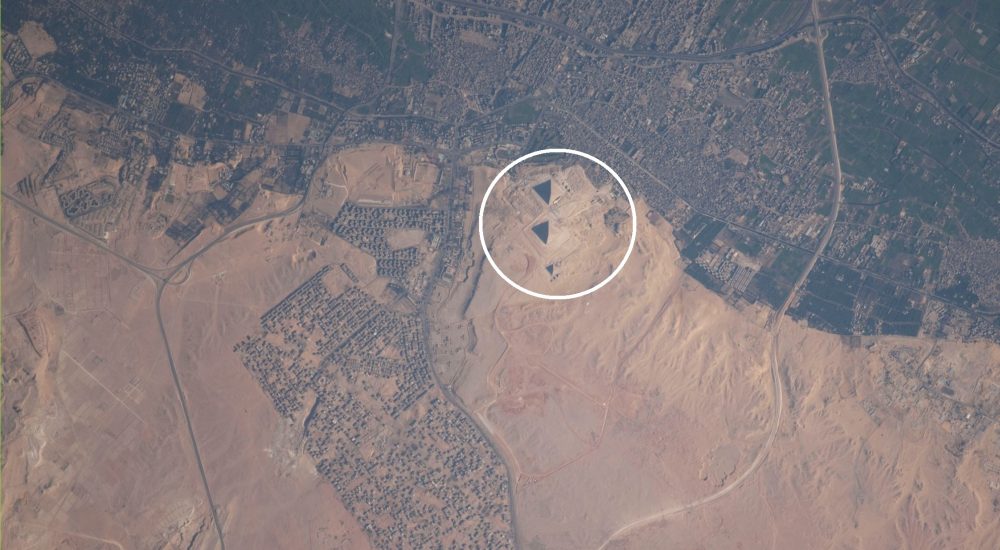Why such phenomenal precision? Why such incredible accuracy? Why such a unique building? For the royal designers of the Pyramid, such mind-boggling precision and accuracy might have been imbued with symbolic and cultic significance that now eludes us.
Several thousands of years ago, countless pyramids were built around the globe. Although we are all familiar with one pyramid, particularly the Great Pyramid of Giza, the truth is that ancient pyramids come in different shapes and different sizes. Although built by different civilizations on different continents, many pyramids display remarkable construction similarities, almost as if the same builders were tasked with erecting them. In fact, one could say that it is almost as if the ancients used the same blueprint to build some of these pyramids.
What are the oldest pyramids on Earth?
Even though many pyramids are similar in design, they are also quite different. Take, for example, the oldest pyramids on Earth (according to mainstream experts), Brazil’s pyramids. It is believed that around 5,000 years ago, an unknown civilization inhabiting present-day Brazil erected some of the first pyramids on the surface of the planet. The Brazilian pyramids are regarded as the oldest on Earth.
Although they are true pyramids, they are very different from the pyramids that ancient civilizations across Central and North America would come to build. The Brazilian pyramids are anything like the Egyptian pyramids.
According to archeologists, although gigantic, the Brazilian pyramids were not as complex as their Egyptian counterparts. This is because the Brazilian pyramids were mostly built out of seashells and rubble, which is also one of the main reasons why the pyramids didn’t survive the test of time, unlike most Egyptian pyramids.
It is estimated that over one thousand pyramids existed at one point in present-day Brazil. However, given the monuments were not built of stone; eventually, they crumbled and were overgrown by vegetation. By no means does this mean that the Brazilian pyramids were lesser structures. It just means they were not as enduring as their Egyptian counterparts. But this is why many of the Brazilian pyramids were destroyed, as people used them as construction material for modern buildings erected in growing towns in southern Brazil.
As explained by Pyramidomania.com, “the Brazilian pyramids were large structures, some of which were 160ft high, covering a base of more than 37 acres. In terms of volume, the Brazilian pyramids were much larger than some examples of Egyptian pyramids.”
Although gigantic, when it comes down to precision, accuracy, and workmanship, Brazil’s pyramids are incomparable to Egypt’s.
Egypt’s Proto-Pyramid
It is believed that the earliest Egyptian Pyramid is that of Djoser, constructed during the Third Dynasty of ancient Egypt. The monument, regarded as the earliest colossal stone building and the earliest large-scale cut-stone construction, marked a revolution in Egyptian architecture. It was a construction project of unseen proportions, and never before had something of this size been attempted in Egypt’s history.
Djoser’s Step Pyramid once stood around 65 meters tall and has a base of 109 m × 121 m (358 ft × 397 ft). Like many others that would follow it, this Pyramid was covered in highly-polished white Tura limestone.
Djoser’s Pyramid Complex
The centerpiece of Djoser’s Pyramid complex was his Pyramid, built out of six massive steps, containing around 330,400 cu. meters (11,668,000 cu. ft) of stone. All in all, Djoser’s pyramid complex was unique as can be. As noted by Lehner, Djoser’s success is echoed through later antiquity in the tradition that this Pharaoh of Egypt, and his royal vizier and architect Imhotep, were the inventors of stone architecture in ancient Egypt. We can observe many familiar forms at Djoser0’s pyramid complex: the first colonnade, the first hypostyle, the portico, life-sized statues, torus-molding, and cavetto cornice, but most importantly, the first Pyramid of Egypt.
The Step Pyramid echoed throughout antiquity
The Step Pyramid echoed throughout antiquity, but although it would be expected that a long line of comparable pyramids would follow Djoser’s, this was not the case. Certain specific elements from Djoser’s Pyramid Complex were taken and borrowed by later generations, but the Step Pyramid did not endure.
After Djoser, a few pyramid complexes were attempted to be built, as seen by Sekehmket’s buried Pyramid and the Layer Pyramid at Zawiyet el-Aryan. However, Egypt’s next Pyramid would come only during the reign of Pharoah Sneferu of the Fourth Dynasty. Djoser is regarded as Egypt’s greatest pyramid builder, and history books tell us that he erected three pyramids: one at Meidum and the Bent and Red Pyramid at Dahshur.

The greater pyramids of Egypt
It can be said that the first “true” pyramids of Egypt started with the reign of Sneferu. Of his three pyramids, we can say that the one at Meidum is the most mysterious of all “great” pyramids because it is within the puzzles of this ancient Pyramid and its surrounding necropolis that we find traces of distant events that help transform archaic Egypt into the classic Old Kingdom Pyramidomania age.
The Pyramid at Meidum was built, just like Djoser’s Step Pyramid, in a series of stages, starting with a seven-step pyramid that was enlarged into an eight-stepped pyramid. Eventually, the builders tried transforming the Pyramid at Meidum into a smooth-sided pyramid, but it collapsed. Today, only three massive towering steps surrounded by rubble remain at the site of Sneferu’s Pyramid at Meidum.
At Dahshur, he built the Bent and Red Pyramids, the latter of which is considered the monument that laid down the necessary foundations for constructing the Great Pyramid.
Perfection, precision, accuracy
Although all pyramids are unique in their own way and are magical to a degree, none is as fascinating as the Great Pyramid of Giza. This massive monument is thought to have been constructed during the Fourth Dynasty reign of Kind Khufu—Sneferu’s son—some 4,500 years ago.
According to archaeologist Rainer Stadelmann, like his father, Khufu most likely ruled more than the 23 years given to him in the Turin Papyrus. Even with a reign of 30 to 32 years, the estimated combined mass of 2,700,000 cu. meters (95,350,000 cu. ft) for his Pyramid, causeway, temples, satellite pyramid, three queens’ pyramids, and officials’ mastabas, which means that Khufu’s architects and builders had to put in place a mind-boggling 230 cu. meters (8,122 cu. ft) of stone each day, a rate of one average-size block every two minutes in a ten-hour day. Although Khufu did not equal the total mass of his father’s monuments, he came close in his single Pyramid. Most importantly, he far surpassed his father’s pyramids in terms of size and accuracy.
The perfect pyramid?
Many scholars refer to the Great Pyramid of Giza as the perfect Pyramid. Thought to have been built with approximately 2.3 million blocks of stone and a total weight of around 6.5 million tons, the Great Pyramid is a behemoth structure representing the most massive single construction process in Egypt’s history.
As for accuracy: the Pyramid’s base is level to within just 2.1 centimeters (under 1 in); the average deviation of the sides from the cardinal directions is 3’6″ of arc; the greatest difference in the length of the sides is no more than 4.4 centimeters (1.7 in).
The Great Pyramid of Giza was the most accurately aligned structure on the planet’s surface, facing true north with only 3/60th of a degree of error. Its alignment is mind-boggling. Experts have determined that the Great Pyramid of Giza was located at the exact center of the landmass on Earth upon completion.
An eight-sided pyramid
Of all the Egyptian pyramids, the Great Pyramid of Giza is the only eight-sided Pyramid in existence. No other pyramid has eight sides. The exact reason behind this peculiar yet nearly invisible feature remains a profound mystery. The Great Pyramids’ eight sides were spotted for the first time by British Air Force pilot P. Groves in 1940 as he was flying above the Pyramid.
Concerning the Great Pyramid’s eight sides, English Egyptologist I.E.S. Edwards wrote: “In the Great Pyramid the packing-blocks were laid in such a way that they sloped slightly inwards towards the center of each course, with the result that a noticeable depression runs down the middle of each face — a peculiarity shared, as far as is known, by no other pyramid.” (The Pyramids of Egypt, 1975, p. 207).
Mathematics and ancient strcutures
Within the Pyramid, a series of mathematical formulas were embedded by the ancient builders: “Petrie found nothing that disproved the pyramidologist’s assumption that the Great Pyramid had been built according to a master plan. Indeed, he describes the Pyramid’s architecture as being filled with extraordinary mathematical harmonies and concordances: those same strange symmetries that had so haunted the pyramidologist.
Petrie not only noted, for example, that the proportions of the reconstructed Pyramid approximated to pi – which others have since elaborated to include those twin delights of Renaissance and pyramidological mathematicians, the Golden Section and the Fibonacci Series.” ― John Romer, The Great Pyramid: Ancient Egypt, Revisited.
Why such phenomenal precision? Why such incredible accuracy? Why such a unique building? For the Pyramid’s royal designers, such mind-boggling precision and accuracy might have been imbued with symbolic and cultic significance that now eludes us.
Perhaps, and after all, we’ve still not fully unraveled all of the mysteries embedded within a structure that has survived the test of time.
Join the discussion and participate in awesome giveaways in our mobile Telegram group. Join Curiosmos on Telegram Today. t.me/Curiosmos





